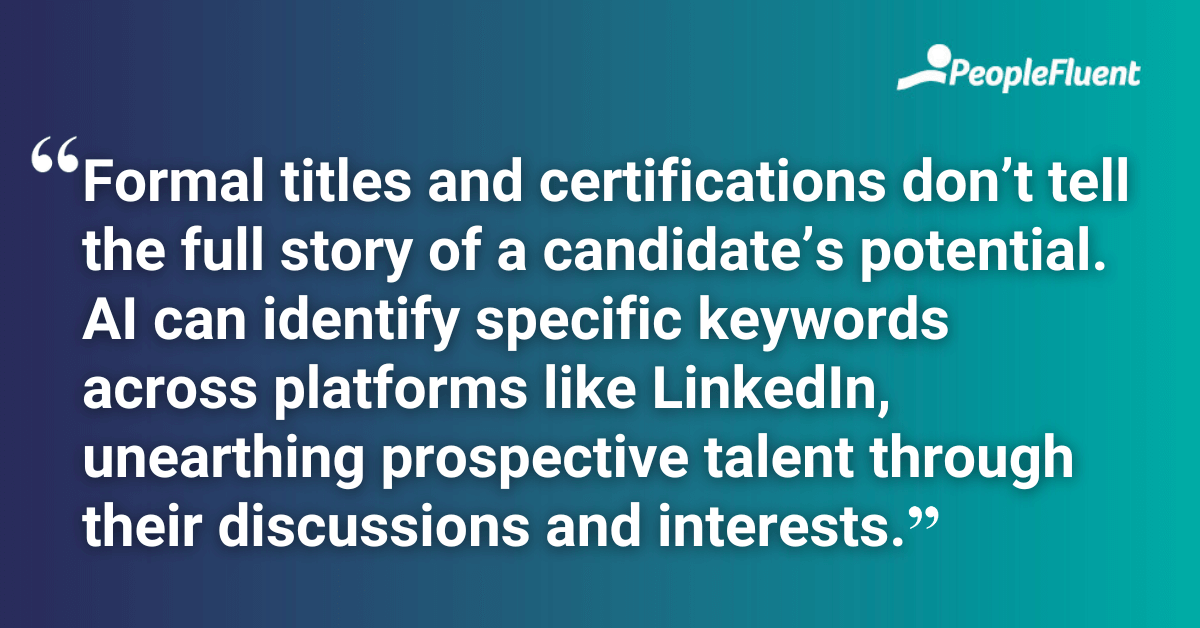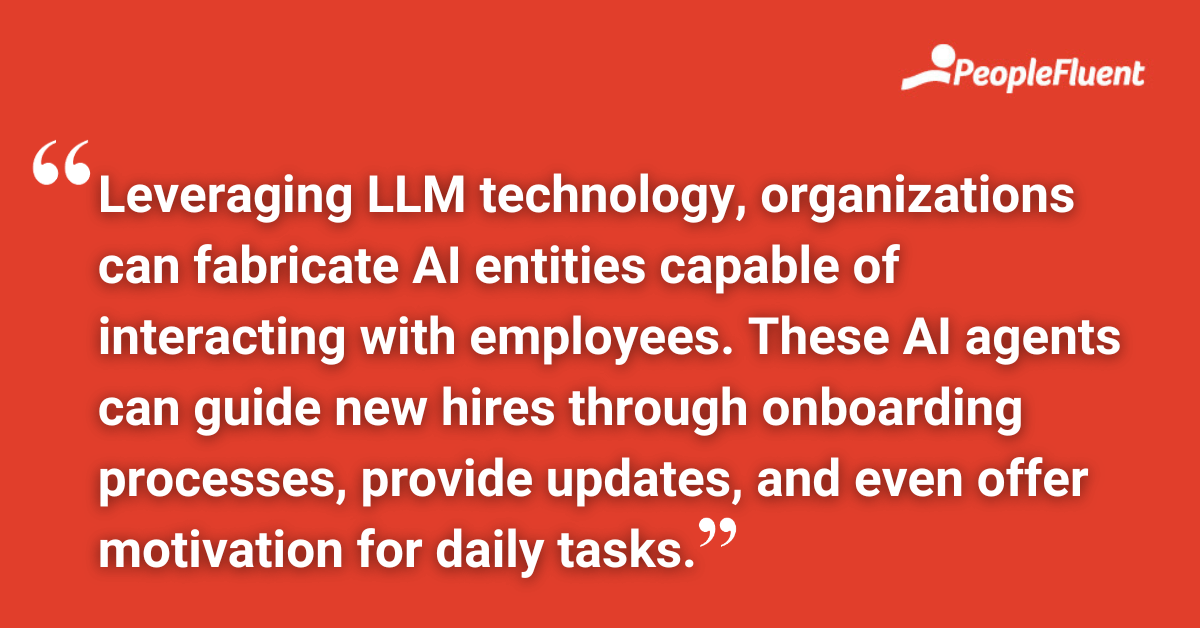Published: Aug 24, 2023Time to read: 6mins Category: Insights
Artificial Intelligence in HR: Everything You Should Know
AI has become a prominent topic of discussion across a wider range of industries. Human Resources (HR) is no exception, and it’s important for HR professionals to have an understanding of the subject. In addition to a general overview of what AI is and the main types of AI you may have encountered (or may soon encounter!), in this article we’ll also take a look at its potential within HR. Read on for insights into the potential of this new technology, as well as a glimpse into how AI can transform aspects of personnel management.
What Is AI?
One article published by Deloitte offers a simple general definition of AI: “A computerized system that exhibits behavior commonly thought of as requiring intelligence.” As the article goes on to suggest, examples of such behavior could include the capability to perceive, reason, learn, interact with the environment, and engage in creative expression.
By this definition, AI is already here: from simple chatbots to automated vehicle systems. However, the emergence of tools like ChatGPT, capable of engaging in human-like conversations, or Midjourney, which produces art contest-winning images, has propelled AI to an entirely new level.

Defining Three Key Concepts
Stepping into the field of AI, you’ll likely have heard certain terminology repeated again and again. But what do terms like “machine learning”, “deep learning”, and “generative AI”—particularly common in recent discussions—actually mean? Let’s take a closer look.
Machine Learning
To be clear: machines do not learn. They rather store data and execute computations in an intricate manner. Hence, machine learning is usually described as a process that employs algorithms to “identify patterns and correlations in data and use them to provide new insights and predictions without being explicitly programmed to do so”. Armed with this data, algorithms can formulate predictions and execute actions.
One example of a practical application of machine learning could be to have an AI analyze numerous spam emails and become proficient at filtering out such content—without explicitly being programmed for this task. In this way, machine learning algorithms "learn" through training. However, they will never truly comprehend the objectives they were trained in.
READ MORE | ‘3 Top Recruiting Trends to Elevate Your Hiring Strategy From the 2023 SHRM Talent Conference’
Deep Learning
Deep Learning is an advanced machine learning iteration employing multiple interconnected processing layers named “neurons”. Deep learning allows for processing a broader array of data resources, necessitates less human-driven data preprocessing, and yields more precise outcomes.
As you may assume, deep learning has been the driving force behind the latest wave of impressive AI technologies that have entered the mainstream.
Generative AI
To use a definition from Gartner, Generative AI algorithms “learn from data about existing artifacts and use this to generate new artifacts”. In simpler terms, Generative AI is capable of using the patterns associated with an existing library of content to create new content in various formats, including audio, code, images, text, simulations, and videos.
Two types of generative AI have been in the news recently:
- Large Language Models (LLM): These models interpret textual inputs and generate human-like textual outputs. Examples include Google Bard and ChatGPT. It's worth noting that these models are now starting to interpret images and other data types. Such large language models are considered “multimodal”.
- Text-to-Image: These models interpret textual inputs to generate high-quality images and art-like pieces. Examples include Stable Diffusion, Midjourney, and DALL-E.

MORE FROM THE BLOG | ‘5 Can’t-Miss Recruiting Trends for 2023’
AI Applications in HR
These developments are exciting, but the practical applications of this technology are perhaps most important. This June 2023 interview with three talent leaders on the McKinsey Talks Talent podcast, as well as an article by Josh Bersin from earlier in the year provide a good starting point. Drawing on those sources, here’s a summary of some of the best potential uses of AI in workforce management:
1) Recruiting
- Increased job advert precision: AI can formulate accurate job descriptions by analyzing real data sourced from your current workforce. Additionally, it can tailor these descriptions to align with the skillsets demonstrated by the most adept professionals in the market.
- Enhanced candidate filtering: AI can efficiently navigate through extensive candidate pools, categorize applicants, and pinpoint the candidates who are best aligned with your objectives. However, Bill Schaninger makes a valid point when advising to be aware of potential criteria gaps that might arise from using your current staff as the sole data source for comparison.
- Uncovering hidden talent: Formal titles and certifications don’t tell the full story of a candidate’s potential. AI can identify specific keywords across platforms like LinkedIn, unearthing prospective talent through their discussions and interests.
2) Training and Performance
- Training program generation: AI can amalgamate insights from previous courses and contemporary information to develop outlines for new training programs. It can even generate course content and design assessments.
- Artificial coaching: Leveraging LLM technology, organizations can fabricate AI entities capable of interacting with employees. These AI agents can guide new hires through onboarding processes, provide updates, and even offer motivation for daily tasks.
- Improved feedback: AI can mitigate the subjective nature of performance evaluations by producing precise analyses grounded in key performance indicators (KPIs). Furthermore, it can offer assistance during challenging conversations, aiding evaluators in communicating assertively and empathetically. As Bryan Hancock suggests, the idea is not to have the AI conduct the performance review but rather to assist in making the work easier and better.
JUST FOR YOU | 'How Data Insights Lead to More Efficient Recruiting Processes’
3) Billing (and More)
- Fairer salaries: Research underscores the fact that 5-15% of payroll entails some pay disparity. AI can cross-reference millions of similar positions to discern benchmarks for competitive compensation and prevalent benefits. Additionally, it can identify pay disparities within our workforce, addressing fairness concerns.
- Diversity and inclusion: AI can help improve equal treatment in the workplace. The creators of Name Coach, an AI name pronunciation assistant, observe that “Deploying AI for sentiment analysis in company communications allows us to identify and rectify exclusionary language or behavior. The result will be more inclusive communication that takes into account the needs and concerns of a diverse workforce.”
- General assistance: Numerous processes can be streamlined through AI-enabled support, aiding in identifying the most suitable course of action. For instance, a prompt like "I need to attend my child's play this Friday at 11 am" could automatically fill a permission request to your manager. Expressing "I'm unable to access my documents" could raise an urgent IT ticket.
AI has the potential to change the world as we know it. These HR applications are just the tip of the iceberg of integrations that, as technology progresses, will make our work easier and more precise. This way, as managers, we can dedicate our time to other activities that require the creative and inherently human thinking that AI cannot provide.
Reach a Team of Industry-Leading Professionals
If you're intrigued by cutting-edge technology like AI, that's likely because you want to offer the most efficient solution for your HR program. At PeopleFluent, we're ready to help you improve your results!